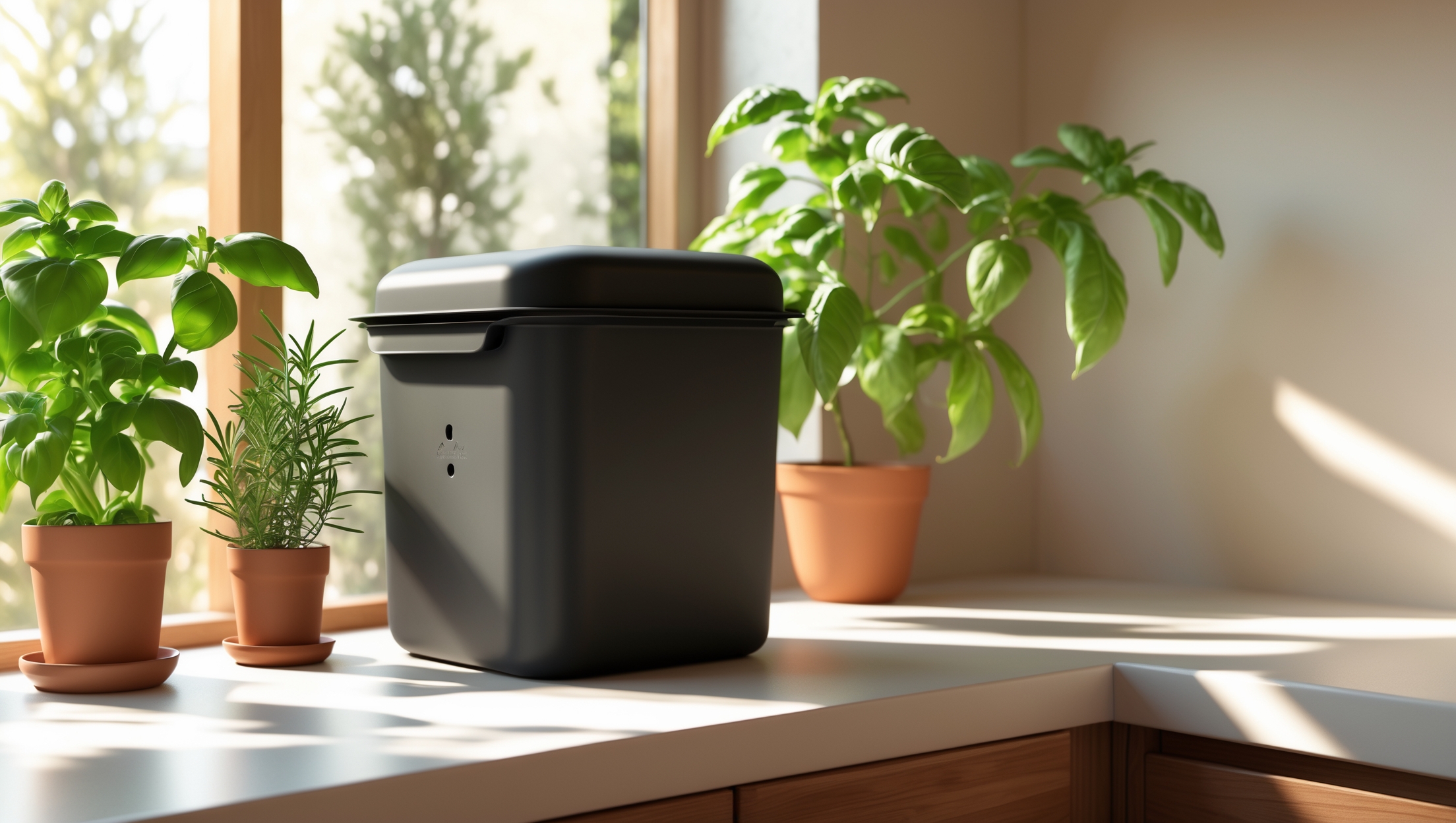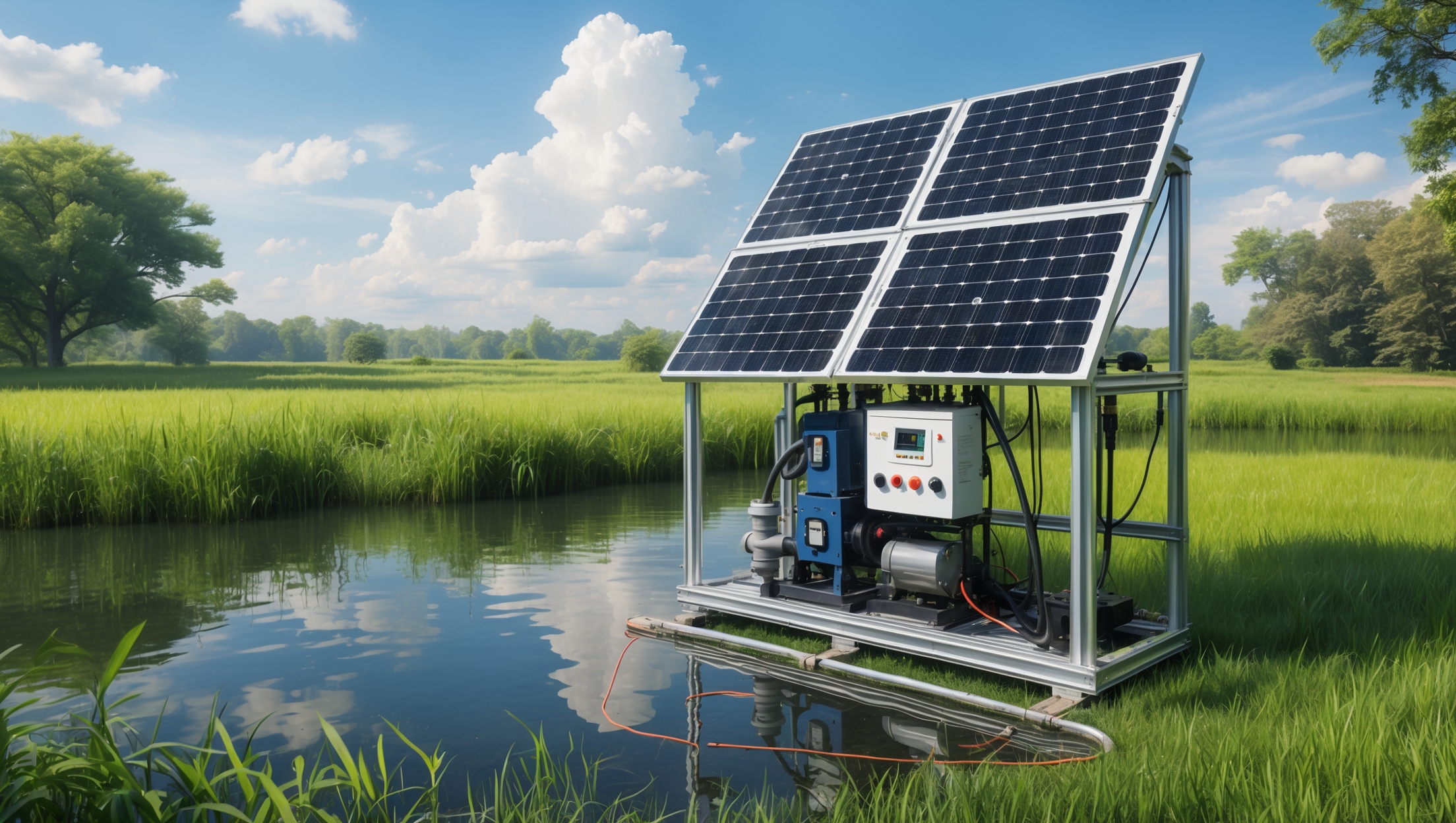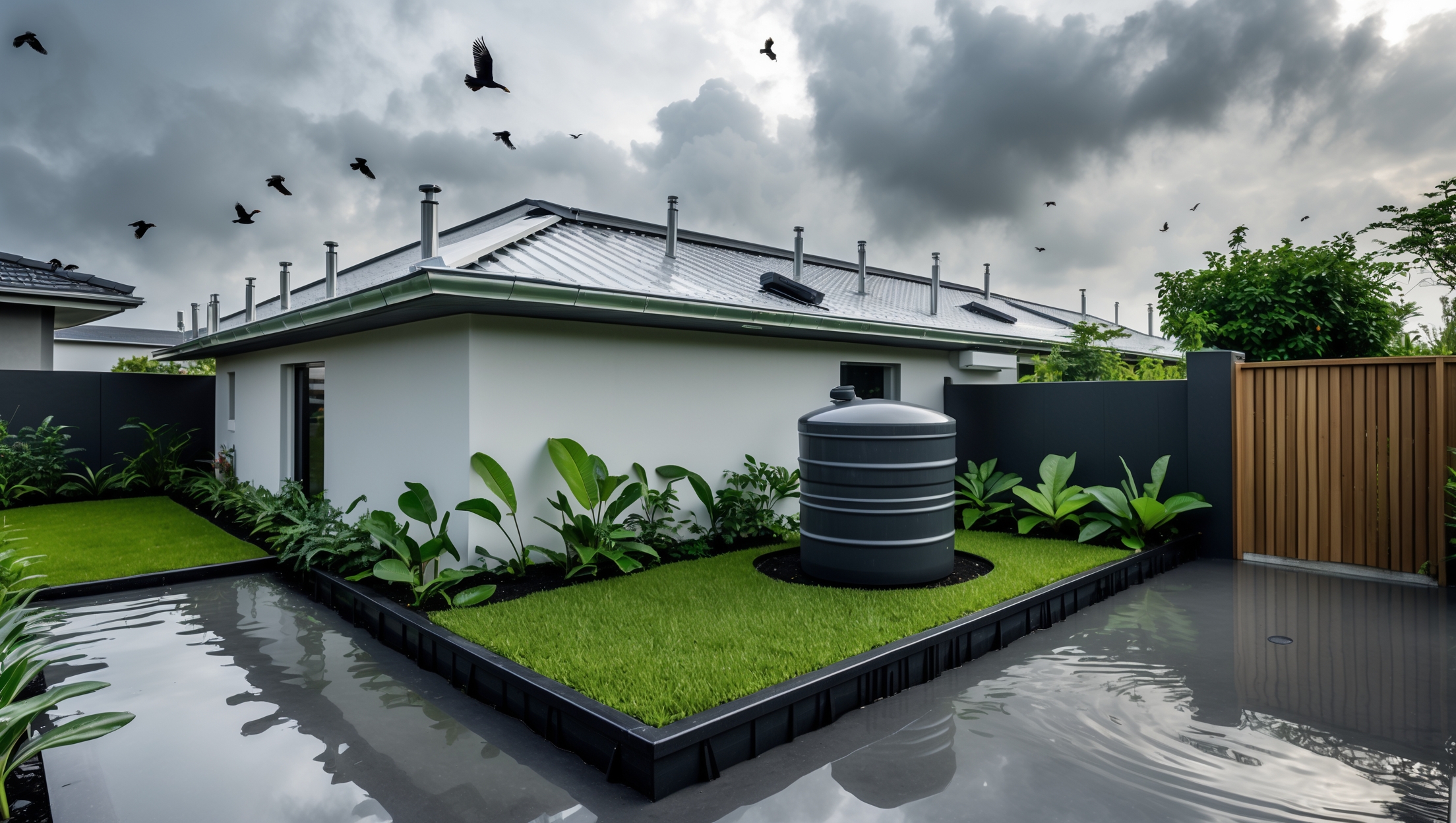Introduction: The Composting Conundrum in Urban Living
Composting is often hailed as a cornerstone of sustainable living, yet for many urban dwellers, it remains shrouded in misconceptions and perceived barriers. The idea of turning food scraps into nutrient-rich soil is appealing, but city residents frequently dismiss home composting as too messy, smelly, or simply impractical for apartment life. These myths persist despite technological advances that have made composting cleaner, faster, and more accessible than ever—even in the most compact urban spaces. In this comprehensive guide, we’ll debunk the most common myths about home composting technologies for city dwellers, explore the range of modern solutions available, and provide practical tips for setting up a successful system in your own urban home. Whether you have a balcony, a tiny patio, or just a kitchen corner, there is a composting technology that can fit your lifestyle. Let’s sift through the rumors, separate fact from fiction, and empower you to become a composting champion—right where you live.
Myth 1: “Composting in Small Spaces Is Impossible”
Understanding the Space Challenge
One of the most persistent myths is that composting requires a backyard or ample outdoor space. Urban residents, especially those in apartments, often believe they have no room to accommodate a composting setup. However, modern composting technologies have evolved to cater to every living situation, including the smallest of studio flats.
Compact Composting Solutions
- Bokashi Bins: These airtight, anaerobic systems fit under a kitchen sink and use beneficial microbes to ferment food waste. They require no outdoor space during the initial stage.
- Electric Food Composters: Countertop appliances like the Lomi or Vitamix FoodCycler rapidly dehydrate and grind food scraps, reducing volume by up to 90% and producing a soil amendment in hours.
- Worm Bins (Vermicomposting): Stackable, odor-controlled worm bins can fit in a closet or on a balcony. Red wigglers process organic waste efficiently in a small footprint.
- Community Drop-off: For those with zero space, many cities offer compost drop-off points or collection services that accept kitchen scraps.
Tips for Small-Space Success
- Choose a system based on your lifestyle and available space.
- Use airtight containers to prevent odors and pests.
- Place bins in ventilated areas if possible, but most modern systems are odor-free and suitable for indoor use.
Myth 2: “Composting Attracts Pests and Smells Terrible”
Odor Control in Modern Composting
Fear of foul smells and unwanted critters is a major deterrent for many. However, when managed properly and with the right technology, home composting can be virtually odorless and pest-free.
Technologies That Prevent Odors and Pests
- Sealed Units: Electric composters and Bokashi bins are airtight, containing all odors within the unit.
- Carbon Filters: Many electric and worm bins feature carbon filters that actively neutralize smells.
- Microbial Action: Bokashi bran and active composting worms outcompete odor-causing bacteria, breaking down food waste before it can rot.
Best Practices for Odor-Free Composting
- Maintain the correct balance of greens (food scraps) and browns (paper, cardboard, dry leaves) to absorb moisture and minimize smell.
- Chop food into small pieces for faster decomposition and less odor.
- Empty bins regularly and avoid adding meat, dairy, or oily foods unless your system is designed for them (such as some electric composters or Bokashi units).
Myth 3: “Composting Takes Too Long for Busy Urban Lifestyles”
Speeding Up the Composting Process
Traditional backyard compost heaps can take months to yield usable compost, which can be discouraging for those seeking quick results. Today’s composting technologies, however, are designed to fit fast-paced urban life.
Rapid Composting Technologies
- Electric Composters: These process food waste in as little as 3–24 hours, turning scraps into a dry, odorless soil amendment.
- Bokashi Fermentation: Fermentation stage takes 2–4 weeks; the pickled waste can then be buried or added to outdoor compost for rapid breakdown.
- Tower Vermicomposters: Worms can convert kitchen waste into castings in 2–4 months, with continuous harvest possible from modular systems.
Time-Saving Tips
- Automate with electric composters if you want instant results.
- Process waste in batches to streamline your routine.
- Use pre-chopping or food processors to accelerate breakdown in manual systems.
Myth 4: “Composting Is Too Complicated or Messy for Beginners”
User-Friendly Composting Technologies
Many people worry that composting is a technical, messy affair requiring constant monitoring. In reality, most modern systems are designed for simplicity and minimal maintenance.
Simplified Operation Features
- Plug-and-Play Electric Composters: Just add food waste, press a button, and remove the finished product.
- Stackable Worm Bins: Modular trays make harvesting worm castings neat and straightforward.
- Bokashi Kits: Pre-measured starter kits and clear instructions minimize guesswork.
Maintenance Best Practices
- Follow manufacturer instructions for your device. Most require only occasional emptying and cleaning.
- Keep a small brush or scoop nearby for easy bin cleaning.
- Use biodegradable liners in bins for even simpler maintenance.
Myth 5: “Composting Doesn’t Make a Real Difference in Urban Environments”
The Impact of Urban Composting
Some believe that individual composting efforts are negligible compared to the overall waste stream in cities. This is far from the truth. Organic waste makes up a significant portion of municipal solid waste, and diverting even a fraction of this has a measurable impact.
Environmental Benefits
- Reduced Methane Emissions: Organic waste in landfills decomposes anaerobically, releasing methane—a potent greenhouse gas. Home composting prevents this.
- Soil Enrichment: Finished compost can be used for balcony gardens, houseplants, or donated to community gardens, enhancing urban green spaces.
- Waste Diversion: Even small households can divert hundreds of pounds of waste annually, easing pressure on municipal collection systems.
Social and Economic Benefits
- Community composting initiatives foster local engagement and education.
- Reduces city costs associated with waste disposal and landfill management.
Choosing the Right Urban Composting Technology
Assessing Your Space, Lifestyle, and Goals
With so many options available, selecting the right system depends on your available space, budget, and composting goals. Here’s a quick guide to help you decide:
- If you want: Fast results with minimal effort — Choose an electric composter.
- If you: Prefer a low-energy, low-maintenance system — Try a Bokashi bin.
- If you: Enjoy gardening and have some outdoor or balcony space — Consider a worm bin.
- If you: Have no space at all — Use a city composting drop-off or collection service.
Key Features to Consider
- Odor control mechanisms (carbon filters, sealed lids)
- Capacity and footprint
- Accepted waste types (some units handle meat and dairy, others do not)
- Energy consumption and noise (for electric units)
- Ease of cleaning and maintenance
Step-by-Step: Setting Up an Urban Composting System
1. Select Your Composting Technology
Based on your assessment, purchase your preferred system from a reputable supplier. Read reviews to ensure reliability and suitability for your needs.
2. Prepare Your Space
- Clear a spot in your kitchen, balcony, or utility area.
- Ensure access to a power outlet if using an electric composter.
- For worm bins or Bokashi, place a tray or mat underneath to catch any spills.
3. Start Composting
- Begin adding food scraps as per system instructions.
- Monitor for moisture and odor; adjust input balance if needed.
- Harvest finished compost or soil amendment as directed by the manufacturer.
4. Use or Donate Your Compost
- Mix compost into potting soil for houseplants or balcony gardens.
- Offer surplus to neighbors, local gardens, or community green spaces.
Addressing Special Concerns: Meat, Dairy, and Bioplastics
Not all composting systems can handle every type of organic waste. Here’s what you need to know:
- Meat and Dairy: Bokashi and most electric composters can process these, while traditional worm bins cannot (they attract pests and cause odors).
- Bioplastics: Most home composters, including electric units, cannot break down industrial bioplastics—read labels carefully.
- Oily Foods: Generally best avoided unless your system is explicitly rated for them.
Overcoming the Learning Curve: Resources and Support
Manufacturer Support and Online Communities
- Many manufacturers offer video tutorials, troubleshooting guides, and customer support hotlines.
- Online forums and social media groups provide peer-to-peer advice, success stories, and troubleshooting tips.
Local Workshops and Initiatives
- Check with your city’s sustainability office or local community gardens for hands-on workshops.
- Some municipalities offer subsidies or rebates for purchasing composting equipment.
Conclusion: Composting Is for Every Urban Home
The outdated image of composting as a smelly, complex, and space-hogging process simply doesn’t hold up in today’s urban landscape. Technological innovations have democratized composting, making it possible for anyone—regardless of living situation—to transform their food waste into a valuable resource. By debunking the common myths, we’ve shown that composting can be clean, easy, and even automated; that there’s a solution for every space and schedule; and that the positive impact of urban composting is both meaningful and measurable. If you’re ready to take the next step in sustainable living, there’s never been a better time to embrace home composting technology. With the right information, a little experimentation, and the support of a growing urban composting community, you can turn your kitchen scraps into green gold—contributing to healthier cities, richer soils, and a brighter future for all. Don’t let myths stand in the way of your sustainability journey: choose your tech, start composting, and enjoy the tangible rewards of greener urban living.





I noticed you mention electric food composters such as the Lomi and Vitamix FoodCycler. How do these compare in terms of ongoing electricity use and the need for replacement parts compared to more traditional options like worm bins or bokashi systems?
Electric food composters like the Lomi and Vitamix FoodCycler typically use more electricity than traditional systems, as they process waste using heat and grinding cycles. Over time, this adds to your utility bill, whereas worm bins and bokashi systems use little to no electricity. Electric units may also require replacement filters or grinding parts, while worm bins and bokashi setups generally only need occasional bedding or bran replenishment. This makes traditional options lower in ongoing costs and maintenance.
You mentioned that bokashi bins don’t require outdoor space during the initial stage. What happens after that stage is complete, especially if you don’t have access to a backyard or garden for burying the pre-compost?
After the initial stage in a bokashi bin, the pre-compost needs to be further broken down. Without access to a backyard or garden, you have a few options: you can add the pre-compost to an indoor worm bin, donate it to a community garden or compost drop-off site, or ask neighbors with gardens if they can use it. Many urban areas have local composting programs that accept bokashi material as well.